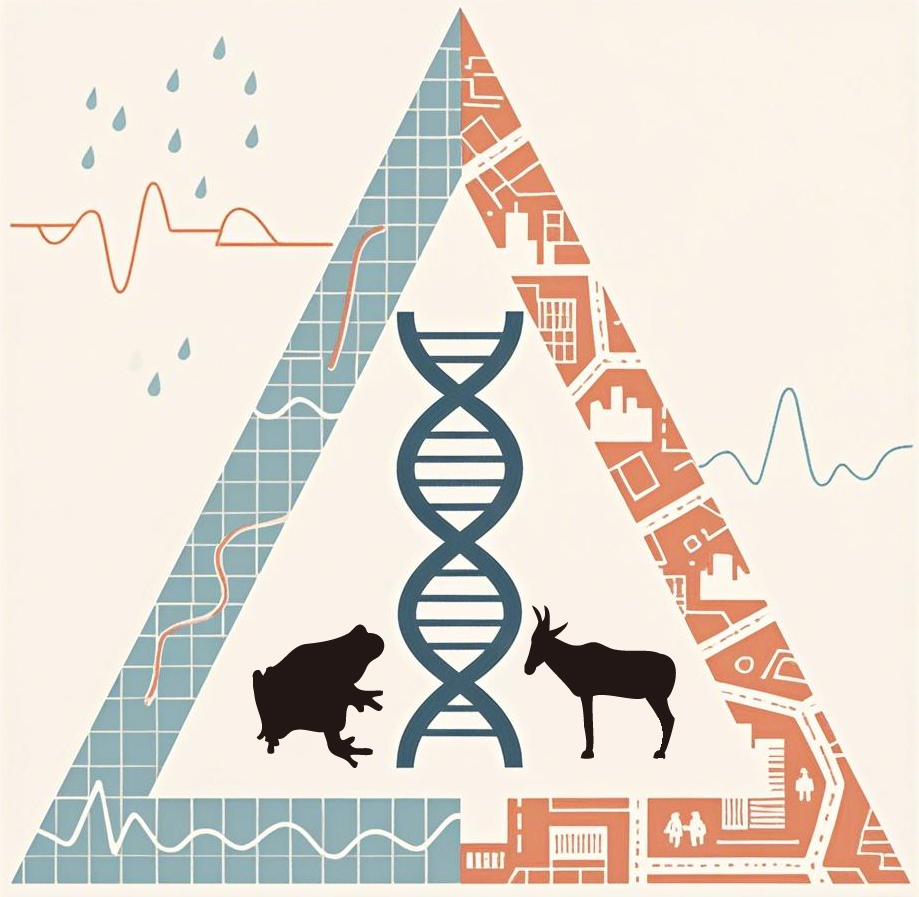气候因子和人类活动对两栖及哺乳动物不同遗传多样性指标的影响
- 1. 陕西中医药大学基础医学院,咸阳,712046;2. 中国科学院动物研究所,北京,100101
收稿日期: 2025-01-13
修回日期: 2025-04-24
录用日期: 2025-06-03
网络出版日期: 2025-06-03
基金资助
国家自然科学基金项目(32400417); 海南热带雨林保护研究基金项目(ZDYF2023RDYL01); 海南国家公园研究院项目(KY-24ZK02); 雅鲁藏布江流域典型大中型哺乳动物分布数量、活动规律的动态监测项目(54000022T000000071200)
The effect of climatic factors and anthropogenic activities on different genetic diversity indicators of amphibians and mammals
1 College of Basic Medicine, Shaanxi University of Chinese Medicine, Xianyang 712046
2 Institute of Zoology, Chinese Academy of Sciences, Beijing 100101
Received date: 2025-01-13
Revised date: 2025-04-24
Accepted date: 2025-06-03
Online published: 2025-06-03
摘要

本文引用格式
范平 , 温知新 , 宋刚 . 气候因子和人类活动对两栖及哺乳动物不同遗传多样性指标的影响[J]. 生物多样性, 0 : 25022 . DOI: 10.17520/biods.2025022
Abstract
Aims: Climatic change and anthropogenic activities have become the principal threats to global biodiversity. Genetic diversity, a fundamental component of biodiversity, is integral to species' adaptation to environmental changes. Amphibians and mammals have distinct differences in evolutionary history, physiological functions, and ecological behaviors. Notably, their contrasting thermoregulatory capacities and mobility render amphibians may be more susceptible to climate change and human activities than mammals. However, it remains uncertain whether these differences result in divergent patterns of genetic diversity. Haplotype diversity and nucleotide diversity are the critical metrics in assessing genetic diversity, yet their respective responses to climatic and anthropogenic influences need to be further investigated.
Methods: This study concentrates on amphibians and mammals, employing the cytochrome c oxidase subunit I (COI) gene fragment to investigate the impacts of climatic factors and human activities on haplotype diversity and nucleotide diversity of these two vertebrate groups.
Results: We found a substantial difference in overall nucleotide diversity (D=0.230, P < 0.01) and haplotype diversity (D=0.211, P < 0.05) between amphibians and mammals. Distinct patterns were record on that how climatic and anthropogenic factors influenced nucleotide and haplotype diversity between the two groups. For amphibians, haplotype diversity was positively correlated with precipitation seasonality range (SPR; β=0.467, P < 0.05), while it was negatively correlated with the annual temperature range (ATR; β=−0.223, P < 0.05). Furthermore, the Human Influence Index (HII) showed a positive correlation with amphibian nucleotide diversity (HII; β=0.035, P < 0.05). Conversely, in mammals, HII was negatively correlated with haplotype diversity (HII; β=-0.018, P < 0.05), whereas the annual temperature exhibited a positive correlation with nucleotide diversity (AT; β=0.002, P < 0.05).
Conclusion: Our results underscore the complexity of genetic diversity responses to climatic and anthropogenic influences. We advocate for the integration of multiple metrics to investigate the distribution patterns of genetic diversity and their driving factors. Future research should further explore the mechanisms through which human activities and climatic factors impact genetic diversity across various animal groups, aiming to develop more targeted biodiversity conservation strategies.

Key words: Climate; Anthropogenic activities; Genetic Diversity; Amphibians; Mammals